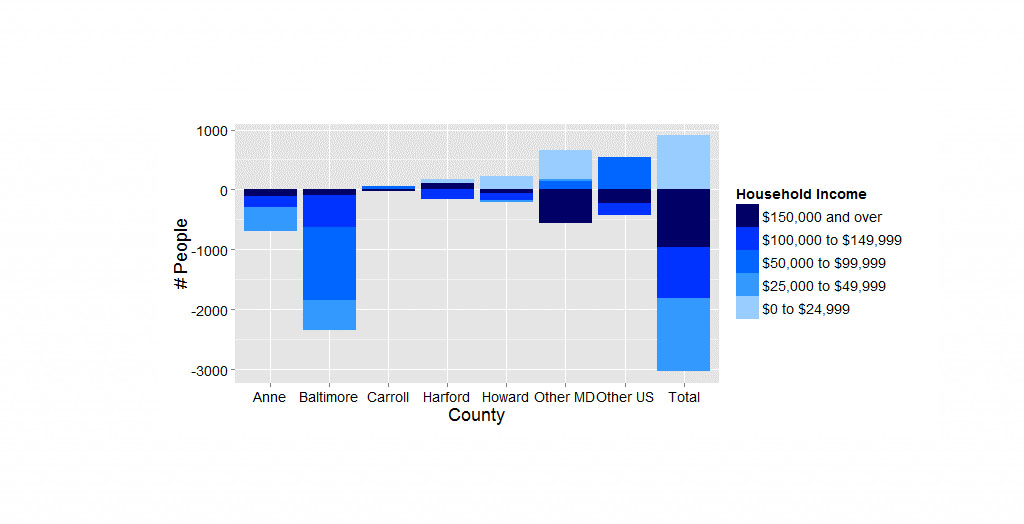Mayor Stephanie Rawlings-Blake announced Grow Baltimore in December 2011 with the goal of increasing Baltimore City’s population by 10,000 new households by 2020. BNIA-JFI has prepared a 3-part series of briefs for the purpose of helping all stakeholders in Baltimore (public agencies, foundations, businesses, community organizations and residents) understand the trends that are already working to attract new residents to Baltimore and better identify the reasons why people are moving out.
See Brief #1: Understanding Migration in Baltimore City
http://bniajfi.org/currentprojects/grow-baltimore/
Key Findings
General
- The total population of Baltimore City declined 4.6% between 2000 and 2010 from 651,154 people to 620,961 people, the smallest percentage loss since 1970.
- The population estimate for Baltimore City in 2014 was 622,793, representing a small yet encouraging growth of 0.3% over 2010.
- The city experienced a net loss of 3,580 residents per year between 2008 and 2012 due to migration, primarily to Baltimore County (40%) and to Anne Arundel County (34%).
Race and Ethnicity
- The city’s Latino population increased between 2000 and 2010 by 134% and the Asian population increased by 43%.
- The majority (53%) of people moving into Baltimore City between 2008 and 2012 were white while a third (34%) were black.
Age
- From 2006 to 2010, Baltimore City experienced a net gain of 579 residents per year who were 18 to 19 years old.
- Millenials (people born between 1982 and 2002) comprise the largest component of migration flows both into and out of the city. They accounted for 63% of the entering population and 53% of the leaving population between 2008 and 2012.
Income and Employment
- Between 2007 and 2011, the City experienced a net gain of households earning less than $25,000 and a net loss of households earning $25,000 or more.
- Between 2008 and 2012, 15% of the entering population worked in the education industry. Nearly 17% of the leaving population worked in the medical industry.
Housing
- People who left the city between 2008 and 2012 may have been looking for more living space. They were more likely to live on one to ten acres of land and to live in a 4-bedroom residence than either people who entered the city or people who stayed in the city.



